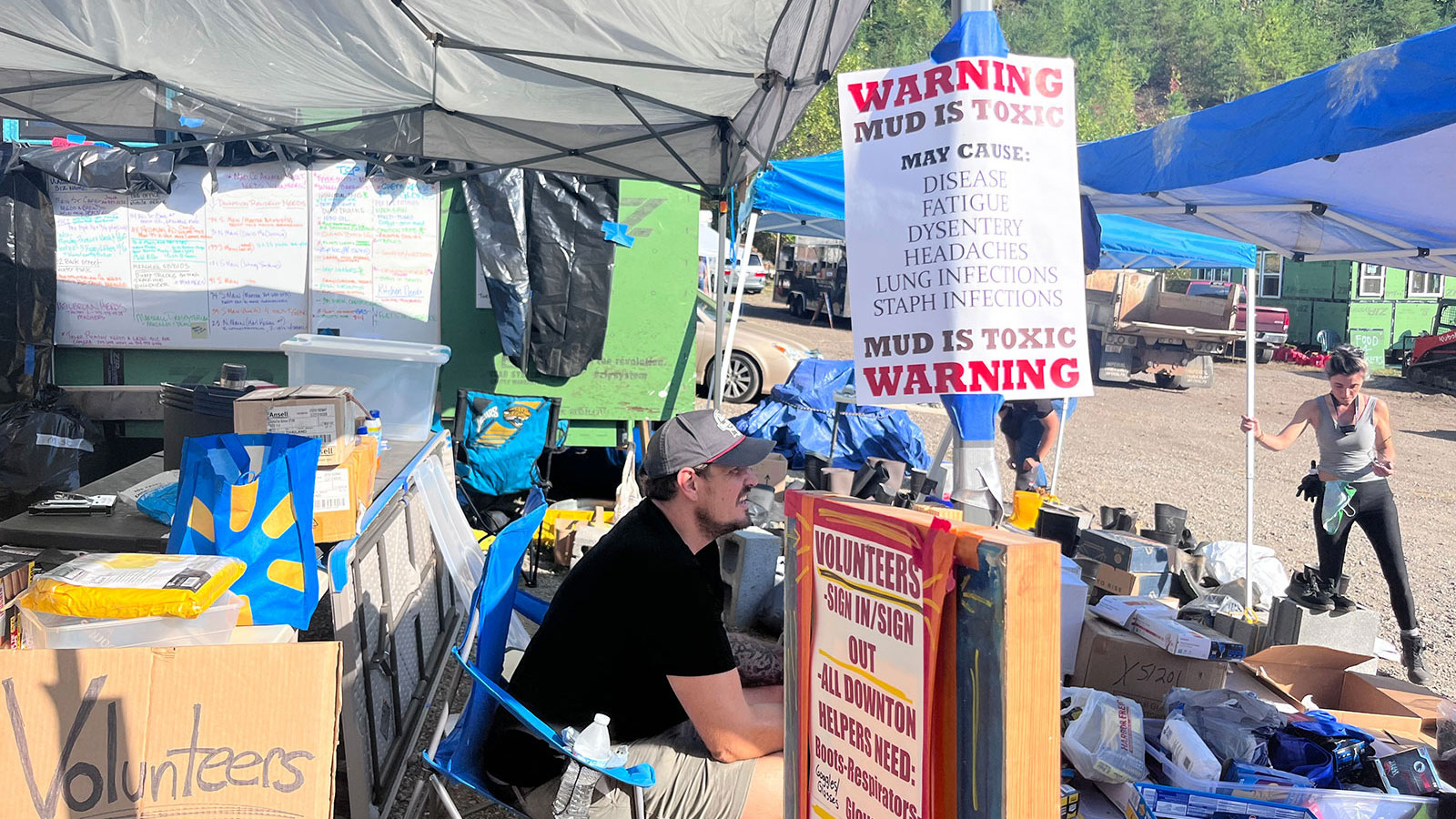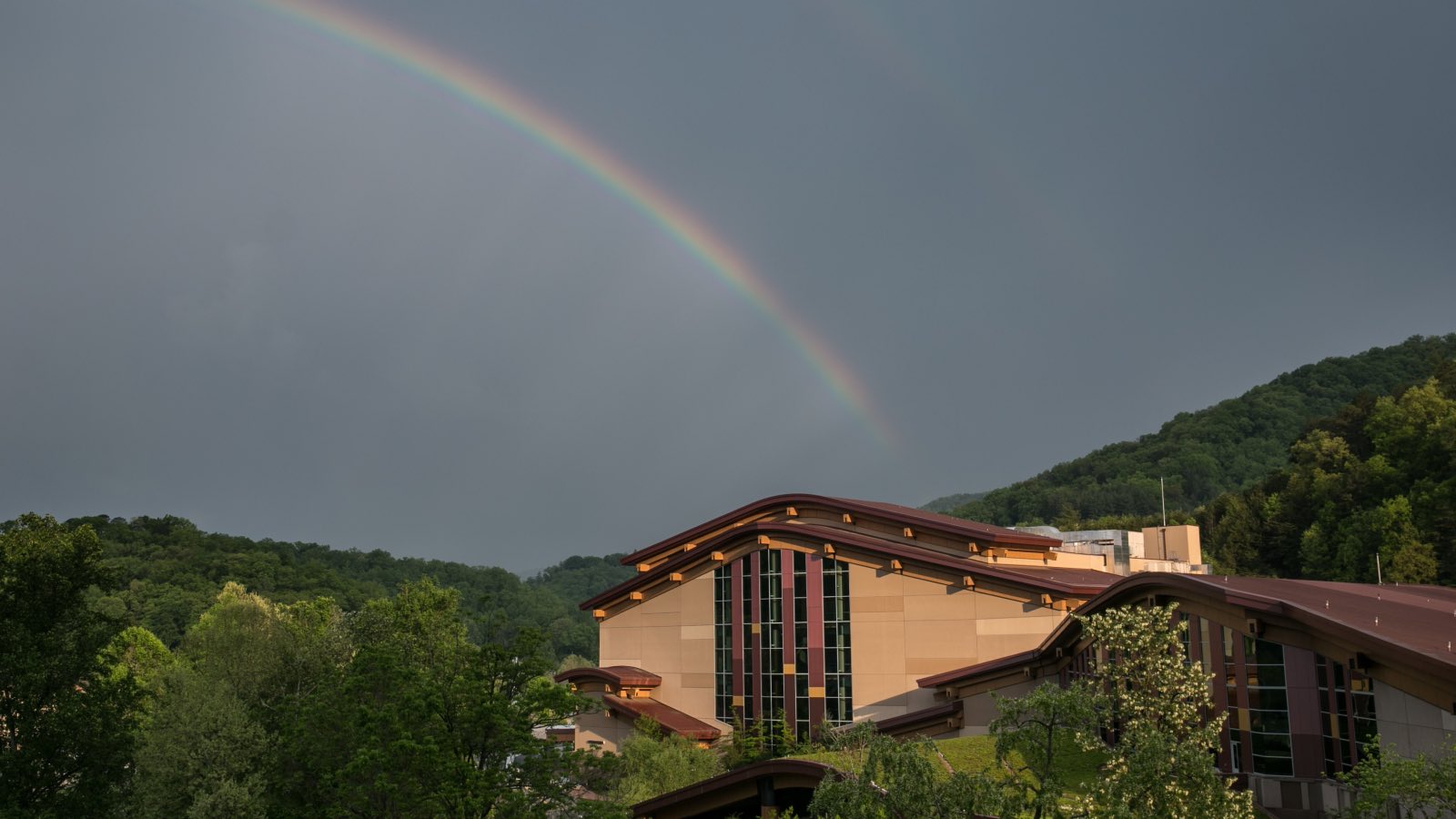Seventeen days after Hurricane Helene devastated western North Carolina, tearing down energy strains, destroying water mains, and disabling cellular phone towers, the indicators of reduction have been laborious to overlook.
Vehicles fashioned a caravan alongside Interstate 40, full of camouflaged troopers, giant sq. tanks of water, and necessities from pet meals to diapers. In cities, roadside indicators — official variations emblazoned with nonprofit reduction logos and picket makeshift ones scrawled with paint — marketed free meals and water.
After which there have been the turbines.
The noisy machines powered the trailers the place Asheville residents sought showers, weeks after town’s water system failed. They fueled the meals vehicles delivering sizzling meals to the 1000’s with out working stoves. They filtered water for communities to drink and flush bogs.
Western North Carolina is way from distinctive. Within the wake of catastrophe, turbines are a staple of reduction efforts across the globe. However throughout the area, a New Orleans-based nonprofit is working to displace as many of those fossil gas burners as it may, swapping in batteries charged with photo voltaic panels as a substitute.
It’s the most important response effort the Footprint Mission has ever deployed in its quick life, and organizers hope the influence will lengthen far into the long run.
“If we are able to get this sustainable tech in quick, then when the actual rebuild occurs, there’s an entire new dialog that wouldn’t have occurred if we have been simply doing the identical factor that we did each time,” stated Will Heegaard, operations director for the group.
“Responders use what they know works, and our job is to get them stuff that works higher than single-use fossil fuels do,” he stated. “After which, they will begin asking for that. It trickles as much as a methods change.”
A ‘no-brainer’ answer to the issue of fuel turbines
The rationale for diesel and fuel turbines is straightforward: They’re broadly obtainable. They’re comparatively straightforward to function. Assuming gas is out there, they will run 24/7, maintaining folks heat, fed, and linked to their family members even when the electrical grid is down. Indubitably, they save lives.
However they’re not with out downsides. The burning of fossil fuels emits not simply extra carbon that exacerbates the local weather disaster, however smog and soot-forming air pollution that may set off bronchial asthma assaults and different respiratory issues.
In Puerto Rico after Hurricane Maria, turbines have been so prevalent after the electrical grid failed that dangerous air air pollution in San Juan soared above the secure authorized restrict. The chance is particularly acute for delicate populations who flip to turbines for powering very important gear like oxygenators.
There are additionally sensible challenges. Turbines aren’t low cost, retailing at massive field shops for greater than $1,000. As soon as preliminary gas provides run out — as occurred in components of western North Carolina within the rapid aftermath of Helene — it may be tough and dear to search out extra. And the machines are noisy, doubtlessly harming well being and creating extra stress for support staff and the folks they serve.
Elizabeth Ouzts
Heegaard witnessed these challenges firsthand in Guinea in 2016 when he was responding to an Ebola outbreak. As a paramedic, his job was to coach locals to gather blood samples and retailer them in generator-powered fridges that might be motorcycled to town of Conakry for testing. He had a grant to provide money reimbursements to the lab techs for the gas.
“That is so laborious already, and the thought of doing a money reimbursement in an excellent poor rural nation for fuel turbines appears actually laborious,” Heegaard recalled considering. “I had heard of photo voltaic fridges. I requested the native logistician in Conakry, ‘Are this stuff even doable?’”
The following day, the logistician stated they have been. They could possibly be put in inside a month. “It was only a no-brainer,” stated Heegaard. “The one cause we hadn’t finished it’s the grant wasn’t written that manner.”
‘Recreation altering for a response’
Two years later, the Footprint Mission was born of that have. With simply seven full-time workers, the group cycles in staff within the wake of catastrophe, partnering up with native photo voltaic corporations, nonprofits, and others, to collect provides and distribute as many as they will.
They deploy solar-powered charging stations, water filtration methods, and different so-called local weather tech to communities who want it most — beginning with these with out energy, water, or a generator in any respect, and increasing to these trying to offset their fossil gas combustion.
The group has now constructed practically 50 such solar-powered microgrids within the area, from Lake Junaluska to Linville Falls, greater than it has ever equipped within the wake of catastrophe. The recipients vary from volunteer hearth stations to trailer parks to an artwork collective in West Asheville.
Mike Talyad, a photographer who launched the collective final 12 months to assist artists of coloration, teamed up with the Grassroots Assist Partnership, a nationwide nonprofit, to fill in reduction gaps within the wake of Helene. “The entire metropolis was making an attempt to determine it out,” he stated.

Elizabeth Ouzts
Photo voltaic panels from Footprint that originally powered a water filter have now largely displaced the turbines for the staff’s meals vehicles, which final week have been offering 1,000 meals a day. “Once we did the switchover,” Talyad stated, “it was a time when fuel was nonetheless questionable.”
Final week, the staff at Footprint additionally supplied six photo voltaic panels, a Tesla battery, and a charging station to displace a loud generator at a retirement group in South Asheville.
The system was powering a system that sucked water from a pond, filtered it, and rendered it potable. Selecting up their jugs of ingesting water, a gradual move of residents oohed and aahed because the photo voltaic panels have been put in, and sighed in reduction when the din of the generator abated.
“Most responders will not be taking part in with photo voltaic microgrids as a result of they’re higher for the atmosphere,” stated Heegaard. “They’re taking part in with it as a result of if they will flip their generator off for 12 hours a day, meaning actually half the gas financial savings. A few of them are spending tens of 1000’s of {dollars} a month on diesel or fuel. That’s sport altering for a response.”
‘Exhibiting up for his or her neighbors’
Footprint’s strong reduction effort and the number of its beneficiaries is owed partly to the size of Helene’s destruction, with greater than 1 million in North Carolina alone who initially misplaced energy.
“It’s actually laborious to place into phrases what’s taking place on the market proper now,” stated Matt Abele, the manager director of the North Carolina Sustainable Power Affiliation, who visited within the early days after the storm. “It’s simply probably the most heartbreaking factor I’ve ever seen — complete cell residence parks which can be simply fully gone.”
However the breadth of the response can also be owed to Footprint’s strategy to assist, which is rooted in connections to grassroots teams, authorities organizations, and the native photo voltaic trade. All have partnered collectively for the reduction effort.
“We’ve been extremely overwhelmed by the optimistic response that we’ve seen from the clear vitality group,” Abele stated, “each from an gear donation standpoint and a monetary sources standpoint.”

Some 4 hours east of the devastation in western North Carolina, Greentech Renewables Raleigh has been soliciting and storing photo voltaic panels and different items. It’s additionally elevating cash for merchandise which can be tougher to get without spending a dime — like PV wire and batteries. Then it vehicles the provides west.
“We’ve bought our bodies, we’ve bought vehicles, we’ve bought relationships,” stated Shasten Jolley, the supervisor on the firm, which warehouses and sells provides to quite a lot of installers. “So, we attempt to make the most of all these issues to assist out.”
The cargo is delivered to Mars Hill, a tiny school city about 20 miles north of Asheville that was just about untouched by Helene. By means of an area regional authorities group, Frank Johnson, the proprietor of a robotics firm, volunteered his 110,000-square-foot facility for storage.
Johnson is only one instance of how folks within the area have leapt to assist one another, stated Abele, who’s primarily based in Raleigh.
“You may inform while you’re on the market,” he stated, “that so many individuals in the neighborhood are coping by displaying up for his or her neighbors.”
‘Obtainable for the following response’
To make sure, Footprint’s operations aren’t seamless at each flip. As an example, a lot of the donated photo voltaic panels designated for the South Asheville retirement group didn’t work, a reality the installers discovered as soon as they’d made the 40-minute drive within the morning and tried to attach them to the system. They returned later that afternoon with functioning items, however then confronted the problem of what to do with the damaged ones.
“That is photo voltaic support waste,” Heegaard stated. “The final website we did yesterday had the identical drawback. Now we have now to determine easy methods to recycle them.”
It’s additionally not unusual for the microgrids to cease working, Heegaard stated, due to comprehensible operator errors, like working all of them night time to supply warmth.
However above all, the issue for Footprint is scale. A tiny group amongst behemoth reduction teams, it merely doesn’t have the bandwidth for a bigger response. When Milton adopted instantly on the heels of Helene, Heegaard’s group made the tough option to hunker down in North Carolina.

With climate-fueled climate disasters poised to extend, the group hopes to entice the most important, most well-resourced gamers in catastrophe reduction to start out recurrently utilizing photo voltaic microgrids of their efforts.
As energy is slowly restored throughout the area, with simply over 5,000 remaining with out electrical energy, there’s additionally the query of what comes subsequent.
Whereas there’s a parallel dialog underway amongst advocates and policymakers about making microgrids and distributed photo voltaic a extra everlasting characteristic of the grid, Footprint additionally hopes to encourage a few of that change from the bottom up. Possibly the volunteer hearth station decides to place photo voltaic panels on its roof when it rebuilds, as an illustration.
“We will change the dialog round resilience and restoration by instantly pointing to one thing that labored when the lights have been out and particles was on the street,” Heegaard stated.
As for the precise Footprint gear, the dream is to create “lending libraries” in locations like Asheville, to be cycled out and in of group occasions and catastrophe reduction.
“The photo voltaic trailer or the microgrid or the water maker that went to the Burnsville elementary faculty proper after the storm — that may be recycled and used to energy the music stage or the film within the park,” Heegaard stated. “Then that gear is right here, it’s being utilized, and it’s obtainable for the following response, whether or not it’s in Knoxville or Atlanta or South Carolina.”





